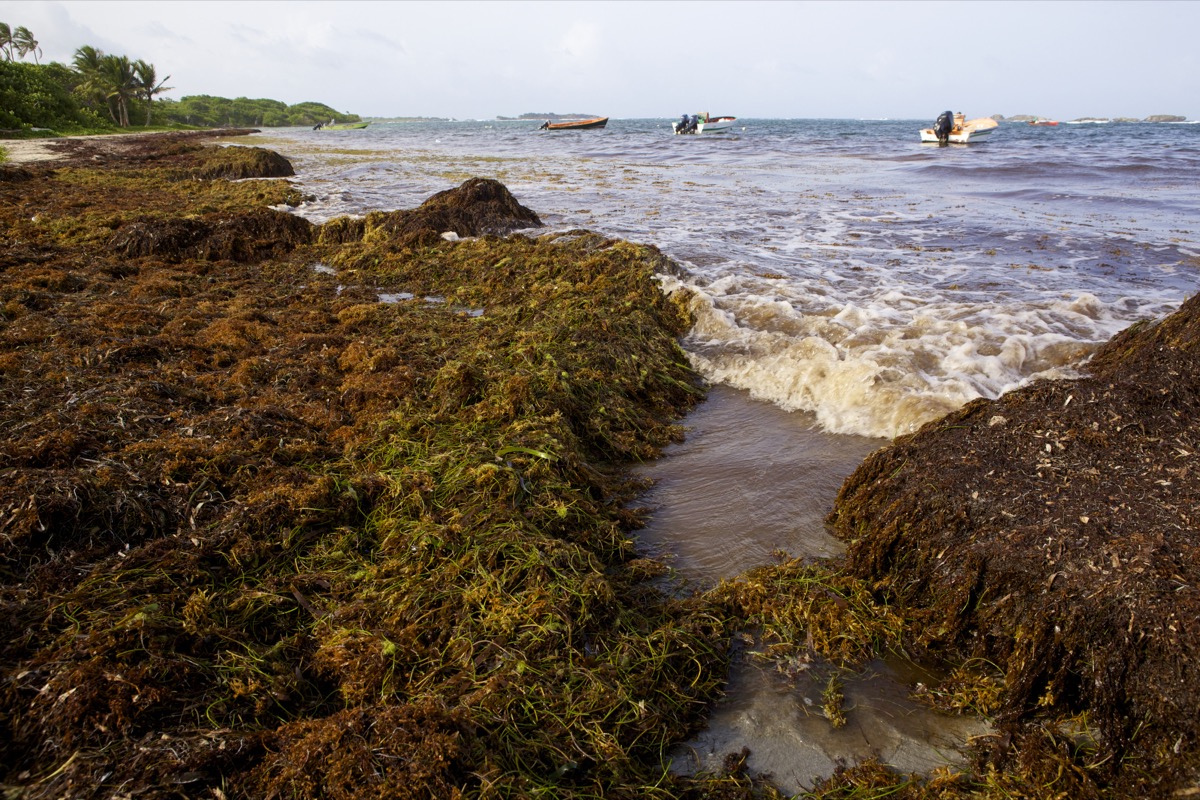
A mass of seaweed, twice the size of the United States, is drifting toward the American coast
A huge pile of brown seaweed is heading menacingly toward the American coast. It can affect the Caribbean and Florida. When decomposing, these algae emit very dangerous toxic gases.
A new environmental disaster threatens the American coasts. A mass 8,000 km wide, twice the size of the United States, is perilously close to the Atlantic Ocean, As CNN explains.
These are sargassum algae, which are tiny brown algae equipped with air balls that act as buoys. Therefore, they remain on the surface and serve as a haven and food source for marine animals. But when they wash up on the beaches, trouble begins.
They invade the coasts in hundreds of kilograms and begin to decompose. A natural process that releases toxic gases, such as hydrogen sulfide, that smell like rotten eggs and cause headaches and vomiting.
Sargassum has been in development for several years
The problem of sargassum is recent. This is due in particular to the fertilizers that are discharged into rivers (mainly the Amazon), which then reach the ocean. In addition, rising temperatures and rising sea levels exacerbate this phenomenon.
According to the information, Sargassum will also wash up on the shores of Guadeloupe. And the prefect of the region, Xavier Lefort, states that a budget of 36 million euros has been allocated for a plan called “Sargas 2”, which aims to combat the spread of this algae over a period of four years.
This plan involves harvesting the seaweed before it washes up on the beaches. In this way, beaches can be appreciated and preserved from tractors that pick them up.
Xavier Lefort also explained: “We will try to move forward very quickly with the construction of the trap dams.” In fact, according to the Regional Monitoring Bulletin, the amount of Sargassum visible in the Atlantic has increased by 204% compared to last year.

“Unapologetic pop culture trailblazer. Freelance troublemaker. Food guru. Alcohol fanatic. Gamer. Explorer. Thinker.”
